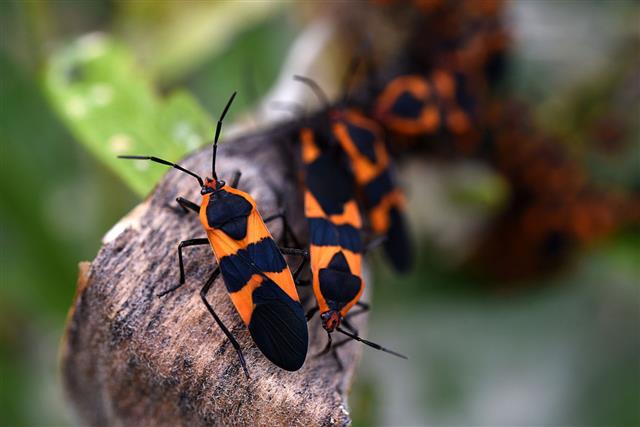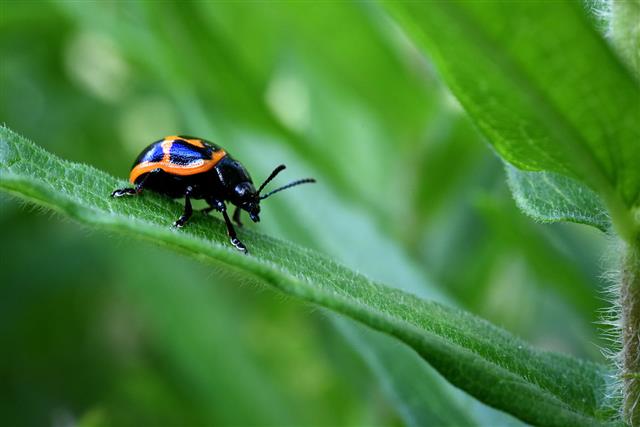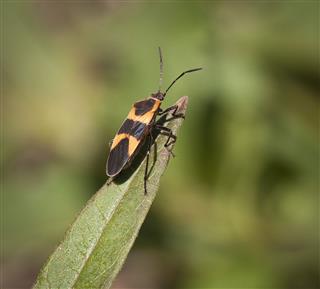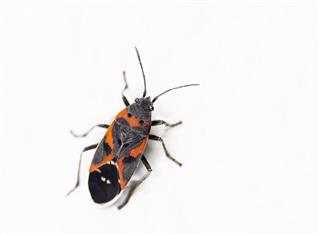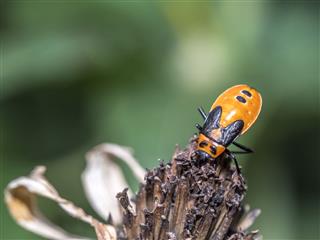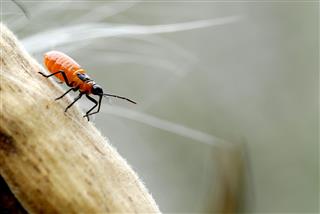
Milkweed bug life cycle involves simple metamorphosis, wherein, the life cycle consists of three simple stages: egg, nymph and adult stage. This article dwells on the three different stages involved in the life cycle of a milkweed bug. Read on…
Milkweed bugs are insects that feed on the milkweed plants and are found only where milkweed plants grow, hence, the name ‘milkweed bugs’. With oblong, orange-red and black bodies, these bugs are found sucking nutrients from the seeds of the milkweed plants. However, this doesn’t mean these bugs eat only milkweeds. They often consume the nectar of a variety of flowers. Milkweed bugs, unlike beetles, moths, flies, and butterflies, belong to the true bugs category of insects. This means that milkweed bugs do not possess mouths for biting and chewing food, but feature a tube-like mouth part (proboscis) for sucking fluids. There are two types of milkweed bugs, large milkweed bug (Oncopeltus fasciatus, 10-16 millimeters) and small milkweed bug (Lygaeus kalmii, 10-13 millimeters). Both belong to the true bug category and both feed on seeds of the milkweed plants.
Milkweed bugs undergo a simple metamorphosis process, involving an egg, nymph and adult stage. Milkweed bugs undergo incomplete metamorphosis, which means the nymph resembles the adult in appearance, only smaller. Let us have a look at the different stages in the life cycle of a milkweed bug.
Nymphs feed voraciously during this stage. Their mouth parts enable them to suck the sap out of the milkweed seeds, flowers and leaves. All this eating results in growth and expansion of the body. However, the tough exoskeleton protecting the body is not flexible and does not allow the nymph to grow further. Thus, the exoskeleton bursts open and the milkweed nymph slides out. A new exoskeleton is developed, which is moist and flexible, enabling the nymph to grow twice its size in just minutes. The new exoskeleton hardens in a few hours and the larger nymph goes about feeding itself and growing.
After a week since the nymphs have hatched, their crispy little transparent exoskeletons are again shed. This process of shedding the exoskeleton in order to grow is called molting. Post-molt, the bug appears creamy-yellow in color, with bright red antennae and legs. Few hours later, its body turns dark orange in color and the legs and antennae turn black. This process of molting is carried out five times by the milkweed nymph until it becomes a fully mature adult.
Each of these nymphal stages are known as instars. The first instar corresponds to a newly hatched milkweed baby bug, while the fifth instar corresponds to the stage just before adulthood. With each instar stage, the body shape gets transformed. Formation of dark body markings and wings are seen.
The adult bugs have the tips of their abdomen as black, with a bright orange segment before the tip and tiny black dots on the edges. If the segments following the orange segment has black bands, it is a male. Males are smaller in size as compared to the females and have two black bands on their underside, while females have one black band and two black spots on their underside. Adults have two soft inner wings, which are used to fly. The outer wings present protect the inner wings.
After a week of entering the adulthood stage, these bugs begin to mate. During mating, the female and male bug will remain attached end-to-end for a long time. The female begins to lay yellow eggs in clusters of 20, a few days after mating. The adult milkweed bugs may live another 2 months after mating and laying eggs, in a sort of retirement period.
Milkweed bugs stop reproducing in the fall, as the weather gets cold and milkweed plants die. Adult milkweed bugs who have not reproduced enter a stage of hibernation during such weather and use the natural antifreeze in the body to survive the cold months. However, a large number of bugs do not make it through the rough winter months.
Milkweed bugs are not considered pests, except for those who wish to cultivate milkweed plants. However, they can pose potential danger to pets, because ingesting them can make pets ill. The sap they suck from the milkweed plant is toxic and can cause harm to its predators. So take care of your pets!
